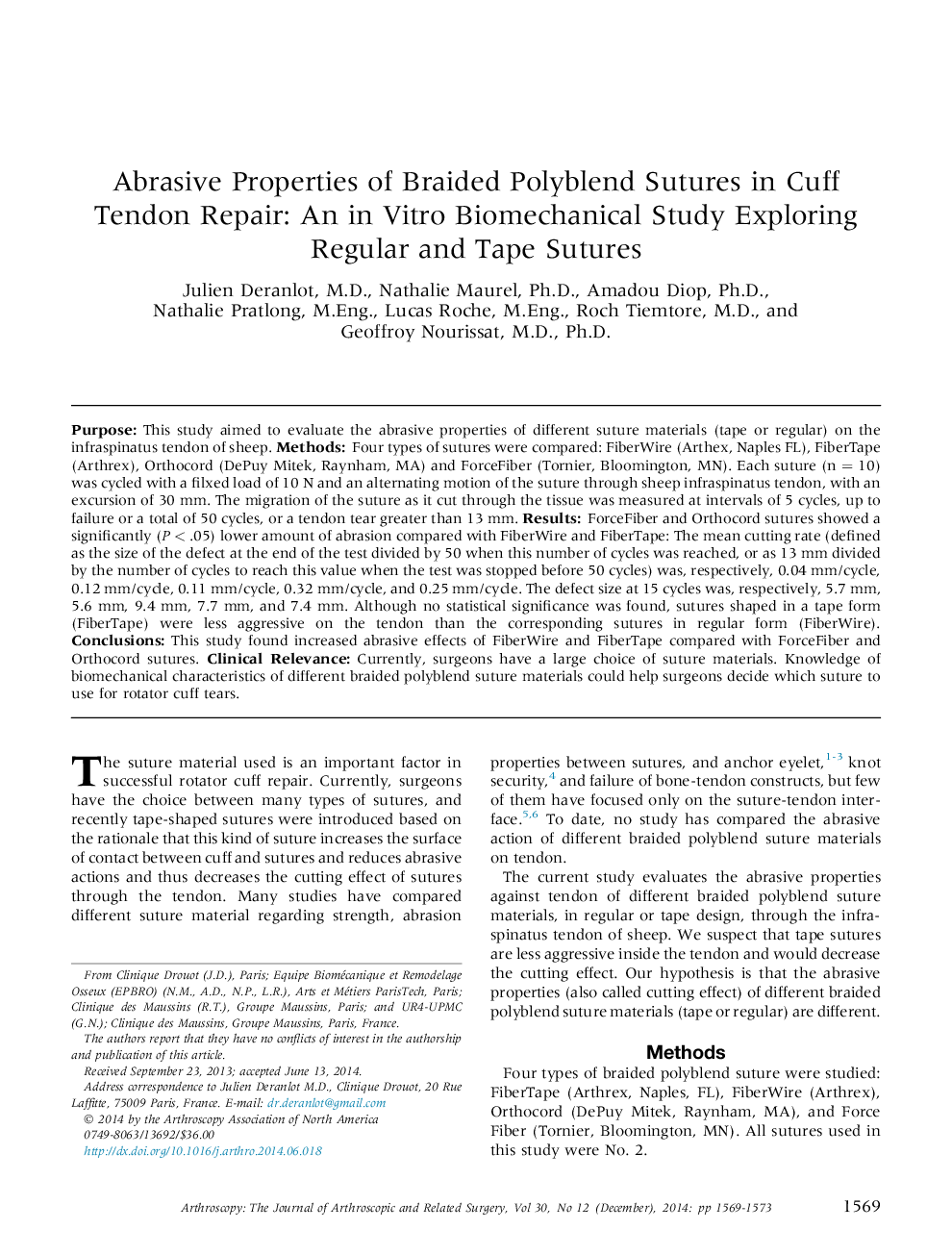| Article ID | Journal | Published Year | Pages | File Type |
|---|---|---|---|---|
| 4042392 | Arthroscopy: The Journal of Arthroscopic & Related Surgery | 2014 | 5 Pages |
PurposeThis study aimed to evaluate the abrasive properties of different suture materials (tape or regular) on the infraspinatus tendon of sheep.MethodsFour types of sutures were compared: FiberWire (Arthex, Naples FL), FiberTape (Arthrex), Orthocord (DePuy Mitek, Raynham, MA) and ForceFiber (Tornier, Bloomington, MN). Each suture (n = 10) was cycled with a filxed load of 10 N and an alternating motion of the suture through sheep infraspinatus tendon, with an excursion of 30 mm. The migration of the suture as it cut through the tissue was measured at intervals of 5 cycles, up to failure or a total of 50 cycles, or a tendon tear greater than 13 mm.ResultsForceFiber and Orthocord sutures showed a significantly (P < .05) lower amount of abrasion compared with FiberWire and FiberTape: The mean cutting rate (defined as the size of the defect at the end of the test divided by 50 when this number of cycles was reached, or as 13 mm divided by the number of cycles to reach this value when the test was stopped before 50 cycles) was, respectively, 0.04 mm/cycle, 0.12 mm/cycle, 0.11 mm/cycle, 0.32 mm/cycle, and 0.25 mm/cycle. The defect size at 15 cycles was, respectively, 5.7 mm, 5.6 mm, 9.4 mm, 7.7 mm, and 7.4 mm. Although no statistical significance was found, sutures shaped in a tape form (FiberTape) were less aggressive on the tendon than the corresponding sutures in regular form (FiberWire).ConclusionsThis study found increased abrasive effects of FiberWire and FiberTape compared with ForceFiber and Orthocord sutures.Clinical RelevanceCurrently, surgeons have a large choice of suture materials. Knowledge of biomechanical characteristics of different braided polyblend suture materials could help surgeons decide which suture to use for rotator cuff tears.
